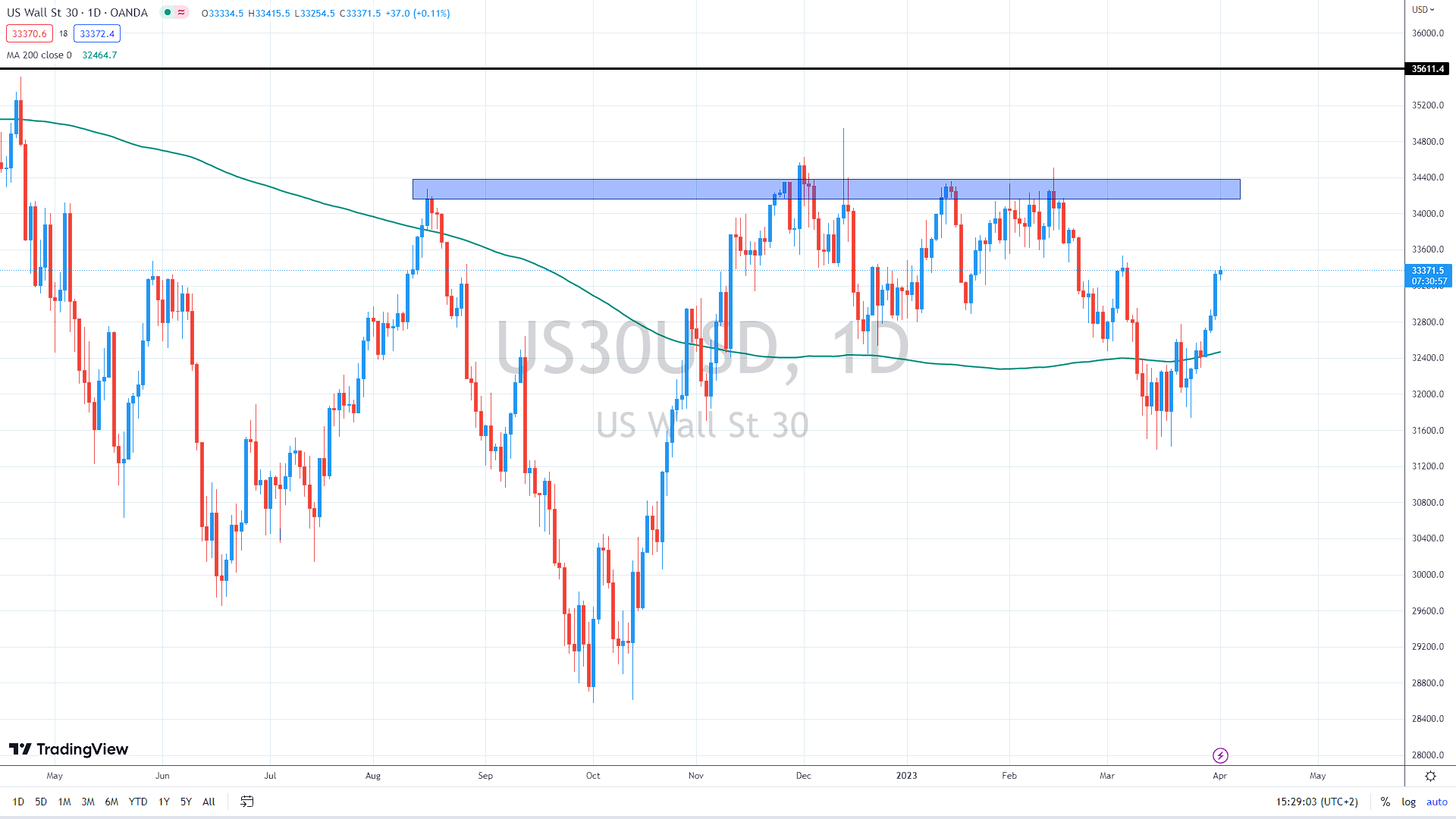The Dow Jones index continued rising vertically on Monday, climbing toward the massive resistance of previous highs in the $34,400 area.
Focus on US labor market data
The announcement of the monthly employment report on Friday will be the highlight of the week, with experts anticipating that the US economy gained 238,000 jobs in March, following a rise of 311,000 in February. The nonfarm payroll data will be the final before the forthcoming May meeting of the Federal Reserve.
Another interesting topic: How to invest $100,000? Read this before you do so
Jerome Powell, chairman of the Federal Reserve, stated at a news conference last month that the labor market is “very tight,” indicating that the labor market continues on a firm footing, as indicated by February’s strong employment growth. In the last six months, monthly employment increases have averaged 343,000.
“[With] job openings being extremely high, labor demand significantly surpasses the supply of available workers,” stated Powell. As a result, FOMC participants estimate that supply and demand dynamics in the labor market will become more balanced over time, moderating rising pressures on wages and prices.
Mid-March Fed projections indicated that the unemployment rate would rise to 4.5% by the end of the year.
Soaring oil adds to inflation expectations
But, the focus on Monday will be on the soaring oil prices due to the Organization of Petroleum Exporting Countries and its allies, including Russia, deciding to cut their oil output target by an additional 1 million barrels per day beginning in May.
You can also read: Bloomberg joins the AI race: Welcome BloombergGPT
The widespread opinion holds that higher oil prices are detrimental to a global economy still dealing with increased inflation. The market is presently divided about the possibility of a final Fed rate rise next month. A jump in oil prices might be viewed as tilting the scales in favor of further tightening, especially if Friday’s job market data remains robust.
In light of that, Susan Collins, president of the Federal Reserve Bank of Boston, and John C. Williams, president of the Federal Reserve Bank of New York, mentioned a decline in inflation but emphasized that incoming data will decide the Fed’s future steps.
If the mentioned resistance near $34,400 is broken to the upside, it could be a massive bullish signal, likely sending the stock index toward its all-time highs near $37,000. Alternatively, a failure to jump above $34,400 might cause some frustration among bulls, possibly dragging the stock index back to its 200-day moving average at $32,500.

Dow Jones daily chart, source: author´s analysis, tradingview.com










Comments
Post has no comment yet.